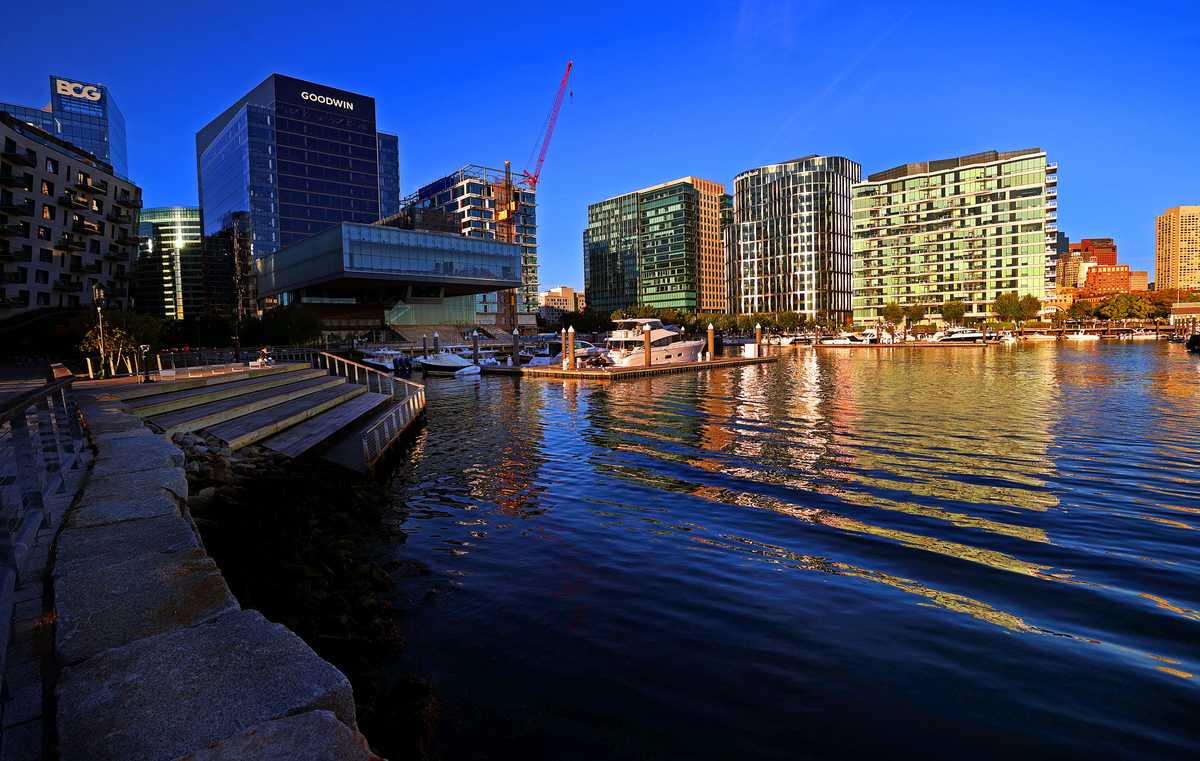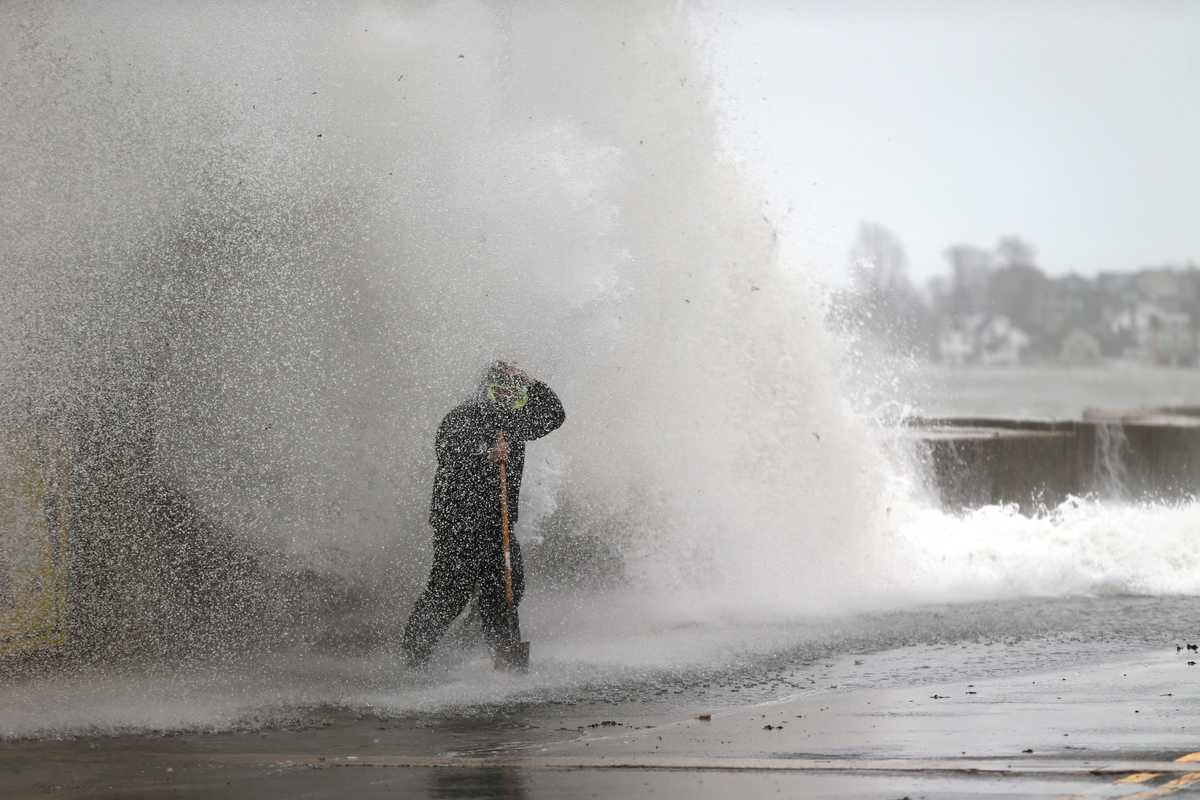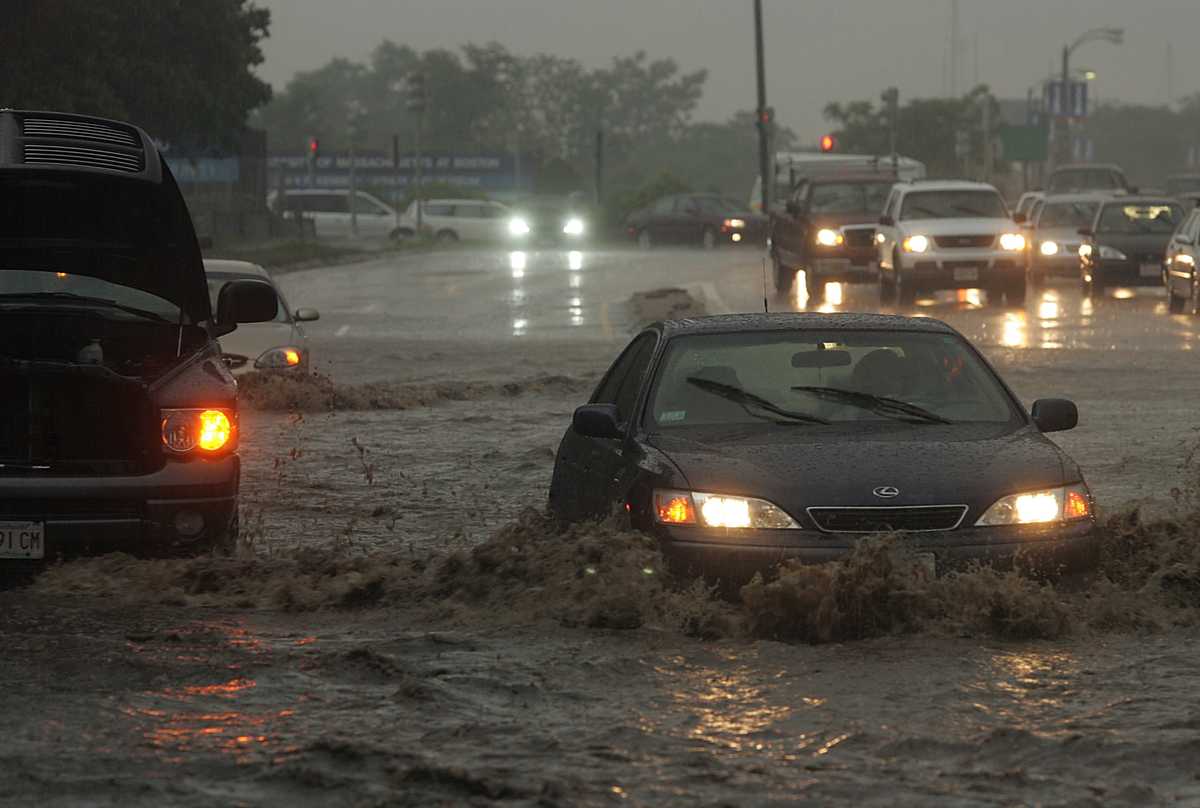Interactive map: Do you live in a flood zone?
Climate change is making dangerous floods more frequent, and not just along the coast. Intense flash flooding events have damaged homes and swept away roadways far inland in recent years.
Read more
- Water is coming for the Seaport; the whole city will be poorer for it.
- If Massachusetts can’t fix floody Morrissey Blvd., how will it keep all our roads and rails dry?
- Behind the levee: The forgotten communities at risk in Massachusetts
- Small towns, high tides: Across Mass., coastal communities grapple with rising seas.
- Hull or High Water: When climate change hits home
Just because your area hasn’t flooded in the past doesn’t mean it’s safe from sea level rise or flash events.
The map below shows your neighborhood’s risk of flooding based on two different models: Flood plains as determined by mapping from the Federal Emergency Management Agency, and the Massachusetts Coast Flood Risk Model from the state’s Office of Coastal Zone Management, which estimates future impacts by 2050.
The key difference between the two is that FEMA flood plains do not factor in the impacts of climate change. The CZM model is focused entirely on coastal areas, so it does not reflect risks to inland communities.
Use the map below to explore the risk in your community.
Advertisement
Map legend details
Regulatory Floodway: Typically a channel designed to carry flood waters without significantly increasing water levels.
Undetermined flood hazard: Flood risk mapping has not yet been conducted.
Area not included: Areas excluded where alternative flood maps are otherwise available.
Annual flooding probability: The probability of flooding at a particular location.
Advertisement
About the data
What is a flood zone, anyway? Flood zones are used by FEMA to identify areas at risk of being inundated by river or coastal flooding. If your home is in a 100-year flood zone, your risk of a flood event is about 1 percent in any given year. If your home is in a 500-year flood zone, the risk is .2 percent in a given year.
Recent research suggests that given the impacts of climate change, the likelihoods of such floods are already higher, and will increase in the future.
This designation is used as a basis for flood management regulations and insurance, but does not factor in the impacts of climate change.
The FEMA flood maps also do not take into account “pluvial flooding” — flooding from rainfall — which Massachusetts is experiencing more frequently from extreme rainstorms.
What is the Massachusetts Coastal Flood Risk Model? The Massachusetts Office of Coastal Zone Management maintains a map, developed by the research firm Woods Hole Group, which incorporates sea level rise projections to estimate the future risk of coastal flooding due to climate change. The model in the map above is based on 2050 flooding projections. While the FEMA map focuses on specific storm scenarios, (1 percent or 0.2 percent chance in a given year) the CZM model is based on thousands of different storm scenarios.
My area is not covered by a flood plain. Does that mean I am safe from flooding? Not necessarily. As climate change worsens, larger and more dangerous storms are putting more people at risk of flooding. In addition, large swaths of the state’s flood maps are not digitized, though much of western Massachusetts is expected to receive digitized maps soon. Preliminary maps were released last year.
Credits
- Design, development, and graphics: John Hancock
- Data editor: Yoohyun Jung
- Interactives editor: Christina Prignano
- Visuals editor: Tim Rasmussen
- Audience: Dana Gerber and Cecilia Mazanec
- Audience editor: Heather Ciras
- Additional editing: Jason Margolis and Sabrina Shankman
- Copy editor: Mary Creane
- Quality assurance: Nalini Dokula
- SEO: Ronke Idowu Reeves
© 2025 Boston Globe Media Partners, LLC


